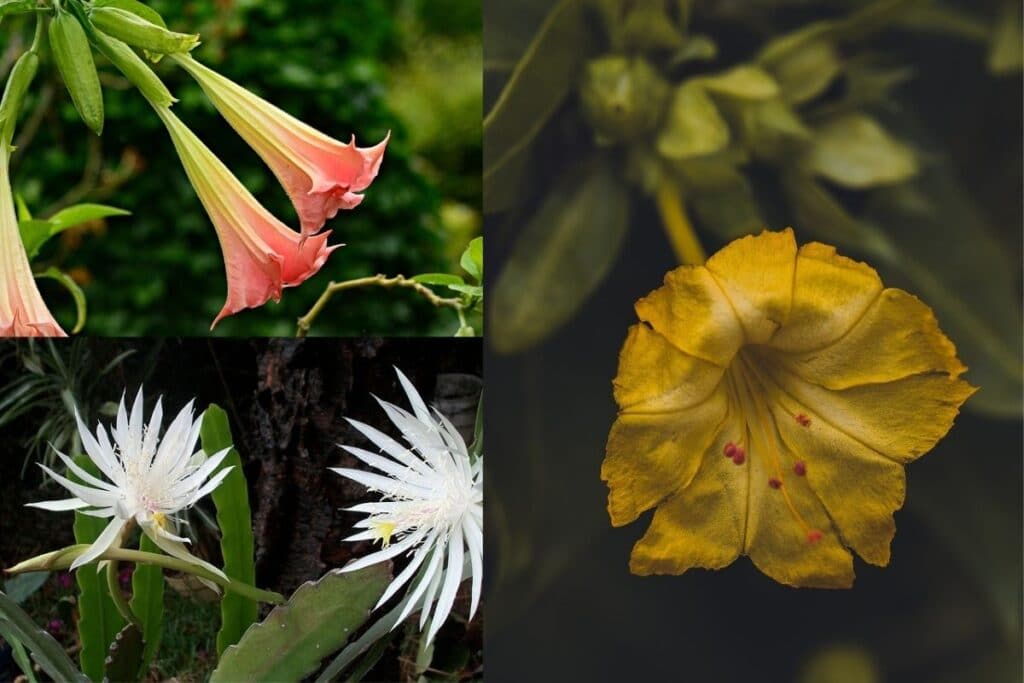While thinking of flowers may ordinarily bring images of beautiful blossoms basking in the bright glow of late afternoon sunshine to mind, there are varieties of plants and flowers that are nocturnal, and only open their flowers at night.
Commonly referred to as “moon flowers,” or “night flowers,” these species vary in blooming length from the span of a single evening, to opening every night of their flowering season.
Drawing nighttime pollinators such as bats and moths with their sweet smell, and sticking out against the dark of night with their pops of bright colors, night flowers are favored by backyard gardeners for both their aesthetics and their fragrance filled evening ambiance.
So whether you’re looking to add some night flowers to your outdoor patio, or you are just hoping to catch a glimpse of these fleeting flowers, this article features the best flowers that close during the day and bloom at night.
1. Queen of the Night
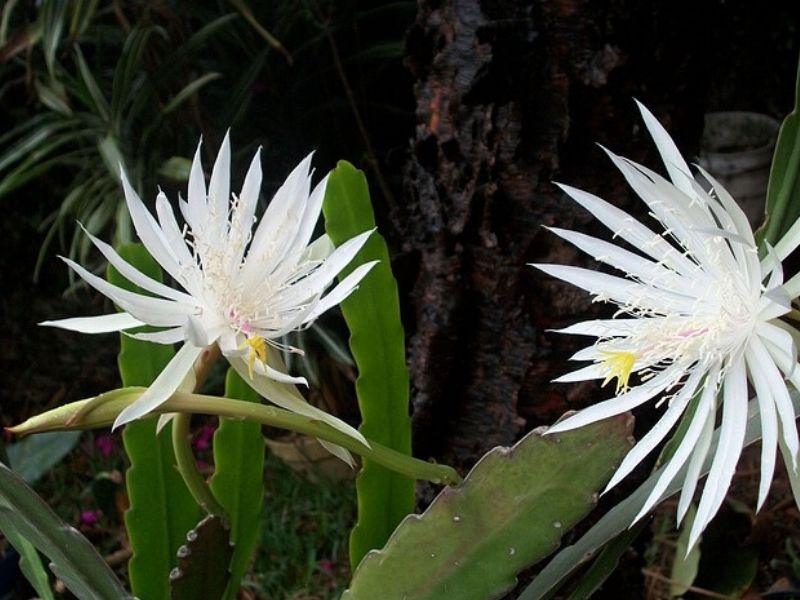
One of the popular type of epiphyllum, epiphyllum oxypetalum, commonly known as Queen of the Night flower, is a perennial, night blooming cereus with large, fragrant flowers that open for the span of a single evening.
As a white flower that blooms at night, this succulent has stunning flowers which have a sweet smell, and can be up to nine inches in diameter when fully open.
When found outdoors in their native habitat, Queen of the Night uses its spineless stalks to store water and to reach out and grab onto the surface of nearby plants. But, lucky for us home gardeners, they can thrive as houseplants and work well in a hanging basket or in a small pot.
The beautiful blossoms will open at night, once per year, (typically in the summer or fall), and will wither by morning. So, be sure to check your Queen of the Night flower every evening, or you may miss its short-lived, spectacular flowers.
2. Evening Primrose
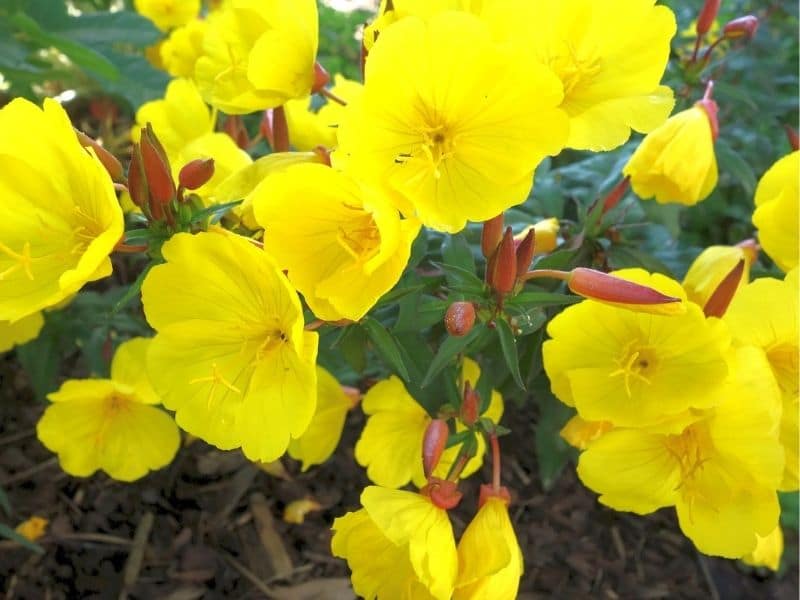
Common Evening Primrose, or Oenothera biennis, is a biennial wildflower that’s native to North America, and has sweet smelling yellow flowers that bloom at night.
Much less elusive than the aforementioned Queen of the Night, the many blossoms of Evening Primrose open every night from late spring to early fall. (Typically from May to July.)
Evening Primrose is a biennial, meaning it will complete its flowering cycle in two years. It establishes its stem and leaves in its first year and it will flower, and then die in the second.
The fragrant, four petaled flowers are yellow, have a lemon scent, and can open to be up to two inches across.
Not only is Evening Primrose eye catching and sweet smelling, but parts of the plant are edible, and it is the source of Evening Primrose oil, which is recognized to have many medicinal uses.
3. Moonflower
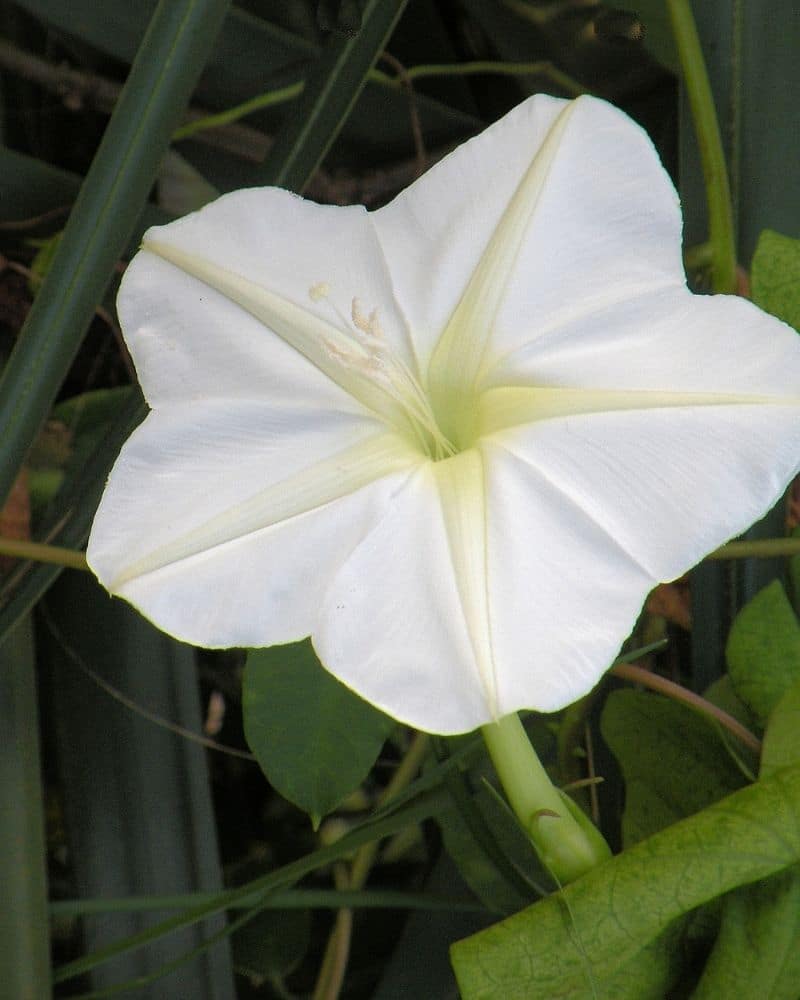
Ipomoea alba, otherwise known as Moonflower, is a perennial vine with large flowers that are white in color, bloom at dusk, and stay open until sunlight shines upon their petals. However, on days when thick clouds obstruct the sun, it has been known to stay open a bit later into the day.
Moonflower is easily identified by its heart shaped dark green foliage, robust vine, and large pure white flowers that open quickly, emit a sweet fragrance, and bloom nightly from mid-summer into fall.
Growing best next to a trellis, fence, or another means of support, Moonflower favors warm, tropical climates and is native to Florida, Louisiana, Texas, Puerto Rico, and the Virgin Islands. But, it is also often grown as an annual flower in cooler climates.
4. Datura
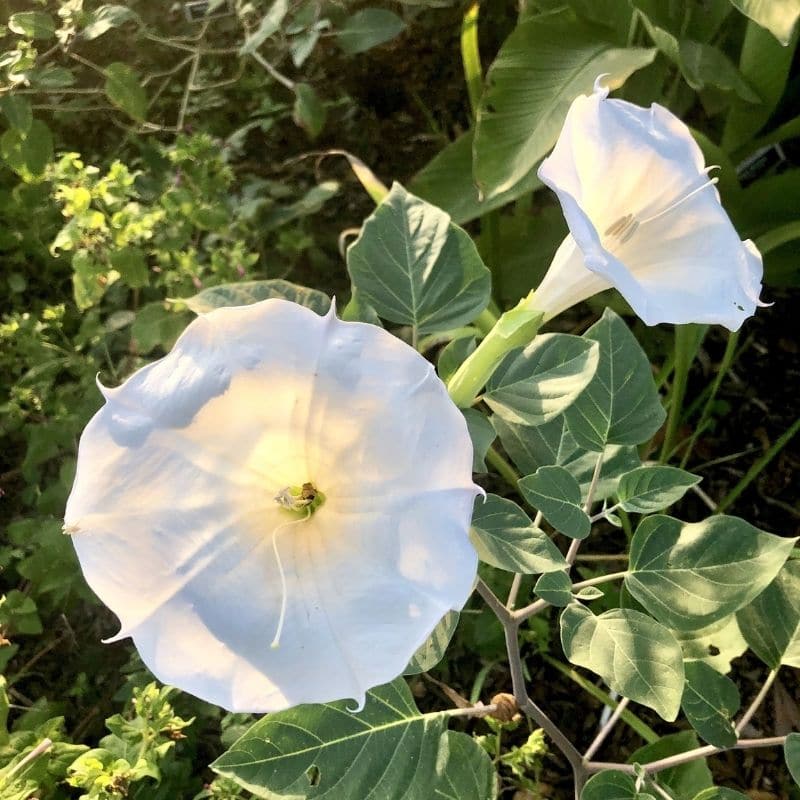
Datura is a genus that includes nine very similar species of night blooming flowers. It is commonly referred to by many names including: Devil’s Trumpet, Thornapples, Jimsonweeds, Moonflower and Sacred Datura.
Datura has large, showy, trumpet-shaped blossoms that stand erect and face the sky. The flowers are predominantly white in color, but can be mixed with shades of pink, purple, and yellow depending on the specific species.
These fragrant flowers open in fall, spring, and summer evenings. Closed by noon the next day, Datura is one of the later lingering night flowers on this list.
It is important to note that while these colorful flowers are alluring, Datura is a member of the nightshade family, and is a highly poisonous perennial that has hallucinogenic properties. They pose a potential danger when handled and ingested, and are not conducive for a home with pets or children.
5. Brugmansia
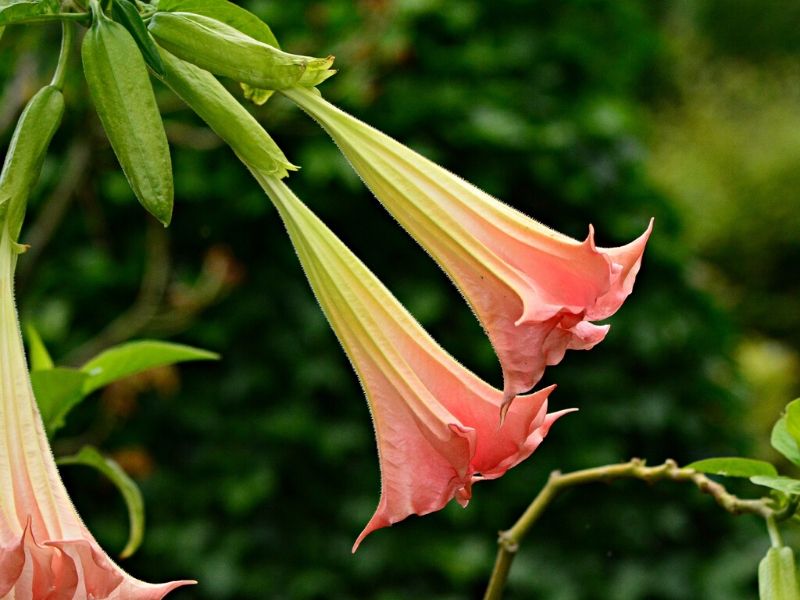
Brugmansia, commonly called Angel’s trumpet, Floripondios, and Moonflowers, is a genus of tropical plants with dangling, trumpet shaped flowers that vary in size, intensity of fragrance, and bloom color (shades of pink, yellow, white, and red) depending on each individual species.
Blooms vary by cultivar, but Brugmansia blooms primarily in the spring, summer, and fall. Some Brugmansia plants bloom throughout their growing season, some bloom every six to eight weeks, and others only produce flowers when the weather is cool. Temperature preferences vary among individual species.
Native to South America, Brugmansia is no longer found in the wild, but it can be cultivated as a houseplant, tree, or herbaceous shrub, depending on your personal preference and geographical location.
Brugmansia is commonly confused with and is very similar to Datura. It was even once considered part of that genus. However, the funnel-like flowers of Brugmansia hang down towards the ground, whereas the blooms of Datura point up towards the sky.
Another member of the nightshade family, Brugmansia is poisonous and all parts of the plant pose a potential danger when handled and ingested.
6. Four O’ Clocks
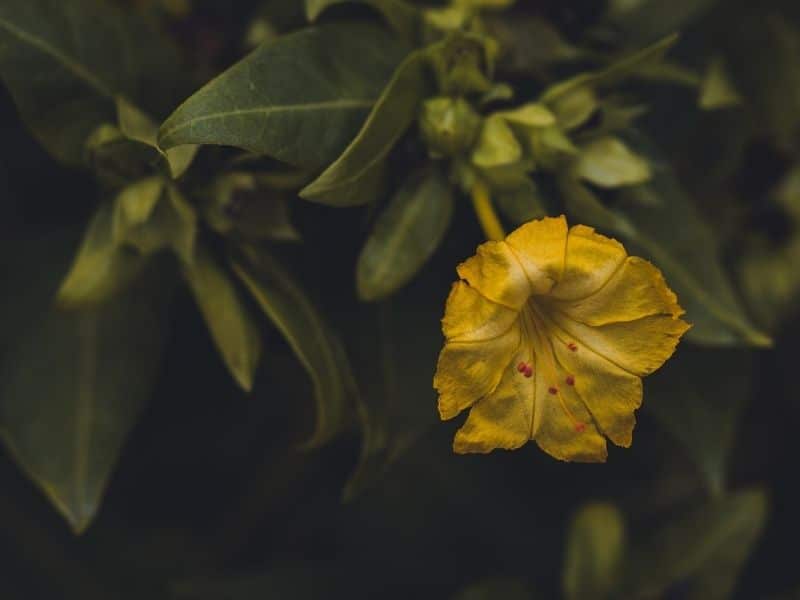
Mirabilis jalapa, or Four O’ Clock flowers, were given their common name based on the time of day that the varying colored blooms open.
Opening late in the day or early evening, blooms produce a sweet smell and are commonly yellow, pink, red, magenta, or white in color. A single plant may produce flowers of multiple different colors, and individual blooms may contain speckles and multiple hues. The flowers that open are withered by morning, but they’re produced and open throughout their growing season of summer through fall.
They also thrive in full sun or partial shade. Native to South America, Four O’ Clock flowers are used medicinally by the indigenous, and are another plant that is poisonous if ingested.
7. Casa Blanca Lily
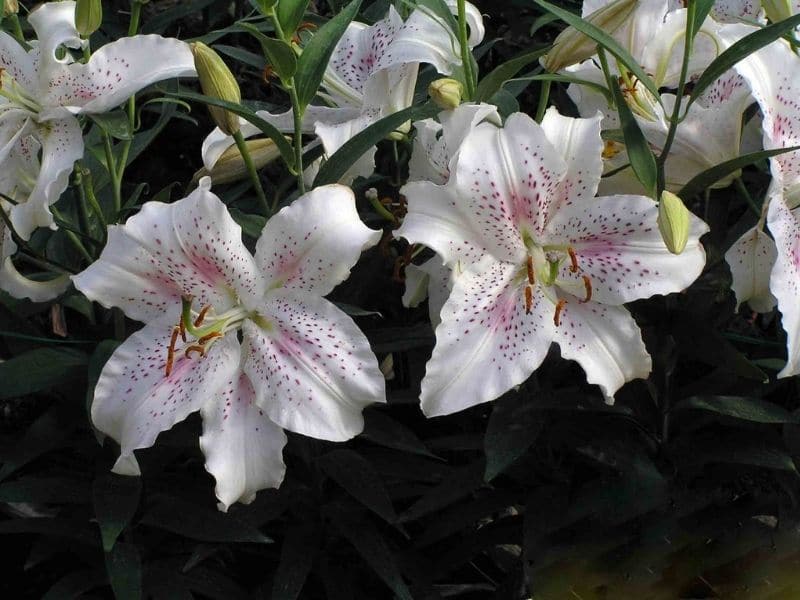
There are many types of lilies, Lilium ‘Casa Blanca’, or Oriental Lily has sizeable, outward facing flowers that are pure white in color, and bloom for up to four weeks in mid to late summer.
Cultivated and bred for their sweet fragrance and captivating beauty, Oriental Lilies bloom in the evening. Their large, luminous, white petals are perfect for reflecting light, standing out against the dark and acting as a focal point in moon gardens and on outdoor patios.
Commonly used for special occasion bouquets, onlookers and pollinators such as butterflies and hawkmoths, find themselves transfixed by the beautiful blossoms and entrancing sweet perfume of the Casa Blanca Lily.
However, while these dazzling flowers are enjoyably fragrant, easy to grow, and well suited for containers, they are not feline friendly and are toxic to cats.
8. Tuberose

Beginning with the Aztecs in Mexico, Polianthes tuberosa, or Tuberose, has been beloved and cultivated for centuries.
Interestingly, what was once a well known, commonly grown flower, is now a unique asset to a backyard garden.
Opening in the evenings of late summer, clusters of white, star shaped, tubular flowers bloom for weeks and unfurl atop a three feet tall stem.
Alluring home gardeners with its powerful fragrance, Tuberose is well known as one of the world’s most fragrant flowers and is grown and harvested to be used in perfumes.
9. Red Flare Water Lily
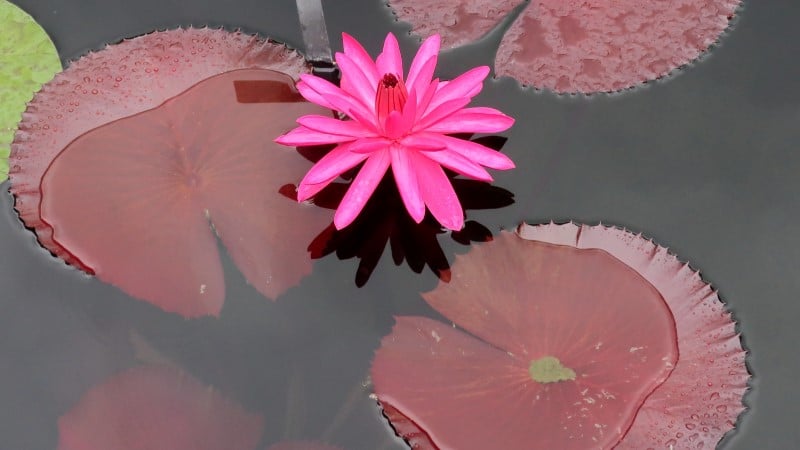
Nymphaea ‘Red Flare’, or Tropical Night Blooming Water Lilies are a free-flowering, aquatic annual that bloom at dusk and stay open until late into the next morning.
Floating just above the water’s surface, Red Flare Water Lilies bloom from mid summer into early fall.
These night blooming water lilies are fragrant, have a large flower spread of seven to ten inches, and vary in hues of bright pinks, reds, and purples. Accented with flat, bronze leaves, these enchanting flowers are a bright, colorful contrast to the water’s dark, glassy surface.
Another flower cultivated through the ages, Red Flare Water Lilies are an enticing addition to your bog, pond, or water garden bed.
10. Chocolate Daisy
Berlandiera lyrata, commonly called Lyreleaf Greeneyes, or Chocolate Daisy, is a night blooming perennial with small, two-inch flowers that is natively found on the plains, masas, and in the rocky, limestone soil of the United States.
Commonly named after its chocolate-like scent that is most noticeable in the morning, the Chocolate daisy opens its beautiful blossoms at twilight.
The flowers have eight, ray shaped, yellow petals that circle a central disk, and the stems average one to two feet in height.
However, while these night blooming plants do smell like coca, are classified as an herb, and are edible, unfortunately they do not taste the same as they smell.
Repelling deer, but attracting butterflies, Chocolate Daisies would make an excellent addition to a backyard garden in USDA growing zones 4-10. If you love daisies, this plant is for you.
11. Night-blooming Jasmine
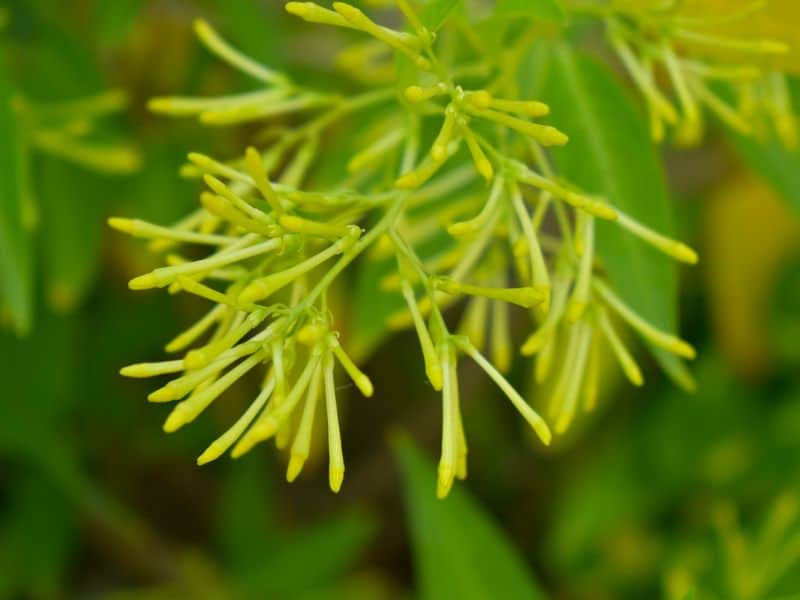
Night-blooming jasmine, also known as Lady of the Night, is a captivating shrub that unveils its beauty and intoxicating fragrance only after the sun sets.
Despite its alluring common name, night-blooming jasmine isn’t actually related to true jasmine at all. Its scientific name, Cestrum nocturnum, tells a different story, with “Cestrum” referencing its genus and “nocturnum” meaning “night,” a fitting tribute to its nocturnal bloom and sweet scent.
The captivating scent of night-blooming jasmine comes from Cestrum nocturnum, a member of the nightshade family (Solanaceae) and a native of the West Indies.
As twilight descends, its delicate white or greenish-yellow flowers unfurl, their sweet perfume filling the air with an irresistible aroma that beckons moths, bats, and other nocturnal pollinators.
Under the soft glow of the moon, these pale yellow flowers become beacons of light, guiding night-flying creatures to their nectar feast. This nocturnal dance continues until dawn, when the jasmine gracefully closes its petals, tucking away its fragrance and beauty until the next moonlit night.
Even though its floral display is fleeting, the night-blooming jasmine’s captivating scent leaves a lasting impression, reminding us of the magic that unfolds under the cover of darkness.
12. Night Phlox
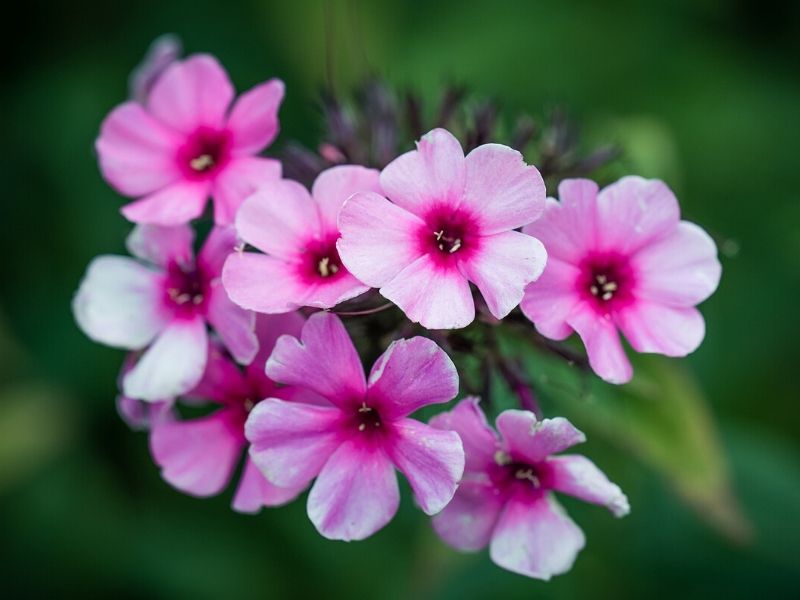
Night Phlox, scientifically known as Zaluzianskya capensis, is a delightful addition to nighttime gardens, earning its reputation as one of the premier night-blooming flowers.
Native to South Africa, this fragrant perennial is renowned for its petite yet intensely fragrant blooms that release a sweet scent in the evening, attracting nocturnal pollinators like moths. The small, star-shaped flowers, typically white or shades of pink, open as dusk falls, creating a captivating display against the backdrop of darkening skies.
Night Phlox is a versatile plant, suitable for both garden beds and containers, and its adaptability to a range of soil types and climates makes it an excellent choice for various garden settings.
Gardeners seeking to enhance the sensory experience of their outdoor spaces will appreciate the charming allure and fragrant beauty that Night Phlox brings to moonlit evenings.
13. Night Gladiolus
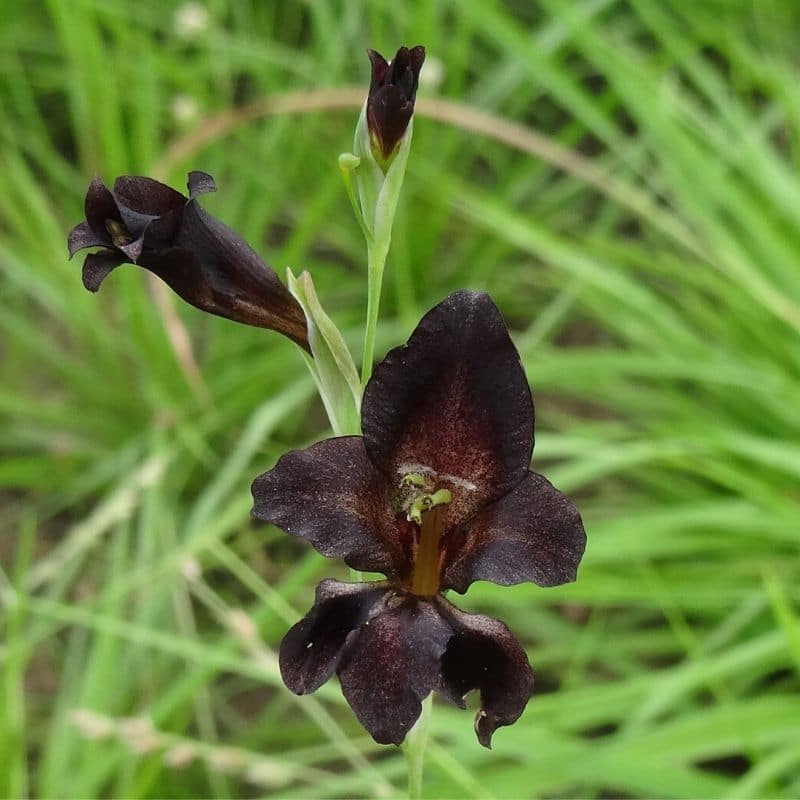
Night Gladiolus, scientifically known as Gladiolus tristis, stands out as a enchanting choice among night-blooming flowers for garden enthusiasts. Originating from South Africa, this perennial bulbous plant is characterized by its elegant, funnel-shaped white blooms that emit a sweet and captivating fragrance after dusk.
The long spikes adorned with numerous flowers create a striking visual display, making Night Gladiolus a charming addition to moonlit gardens. These delicate flowers are particularly well-suited for evening or night-themed gardens, adding an element of mystery and allure to the landscape.
Their adaptability to various soil types and ability to thrive in full sun contribute to their popularity among gardeners looking to create a serene and fragrant nocturnal retreat in their outdoor spaces.
The Night Gladiolus serves as a testament to the beauty that unfolds in the moon garden when the sun sets, offering a unique and enchanting experience for those who appreciate the magic of nighttime blooms.
FAQs
What is the flower that glows at night?
The Moonflower (Ipomoea alba) is a notable example of a flower that glows at night. Its large, white, fragrant blooms unfurl in the evening and emit a luminous glow, attracting nocturnal pollinators such as moths.
What is the meaning of night blooming flowers?
Night-blooming flowers, with their enchanting nocturnal beauty, often symbolize mystery, hidden secrets, and the allure of the unseen. They can also represent the resilience and beauty that can emerge in the darkness, reminding us that there is still magic and growth even in challenging times.
Final thoughts
Each of these thirteen night blooming flowers combines brilliant beauty and an alluring aroma, making it well worth staying up past your usual bedtime in order to gaze upon and their fleeting flowers.
Ranging from edible and medicinal to hazardous for your health, and varying widely in shape, size, and blooming length, night blooming flowers vary widely in their effects and overall experience.
Elevating your outdoor ambiance with their incredible aromas and breathtaking blossoms, night blooming flowers would be an uplifting addition to the home or outdoor patio of a fragrant flower-loving night owl.

